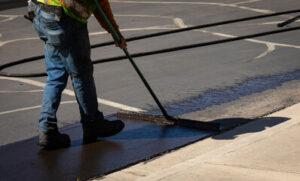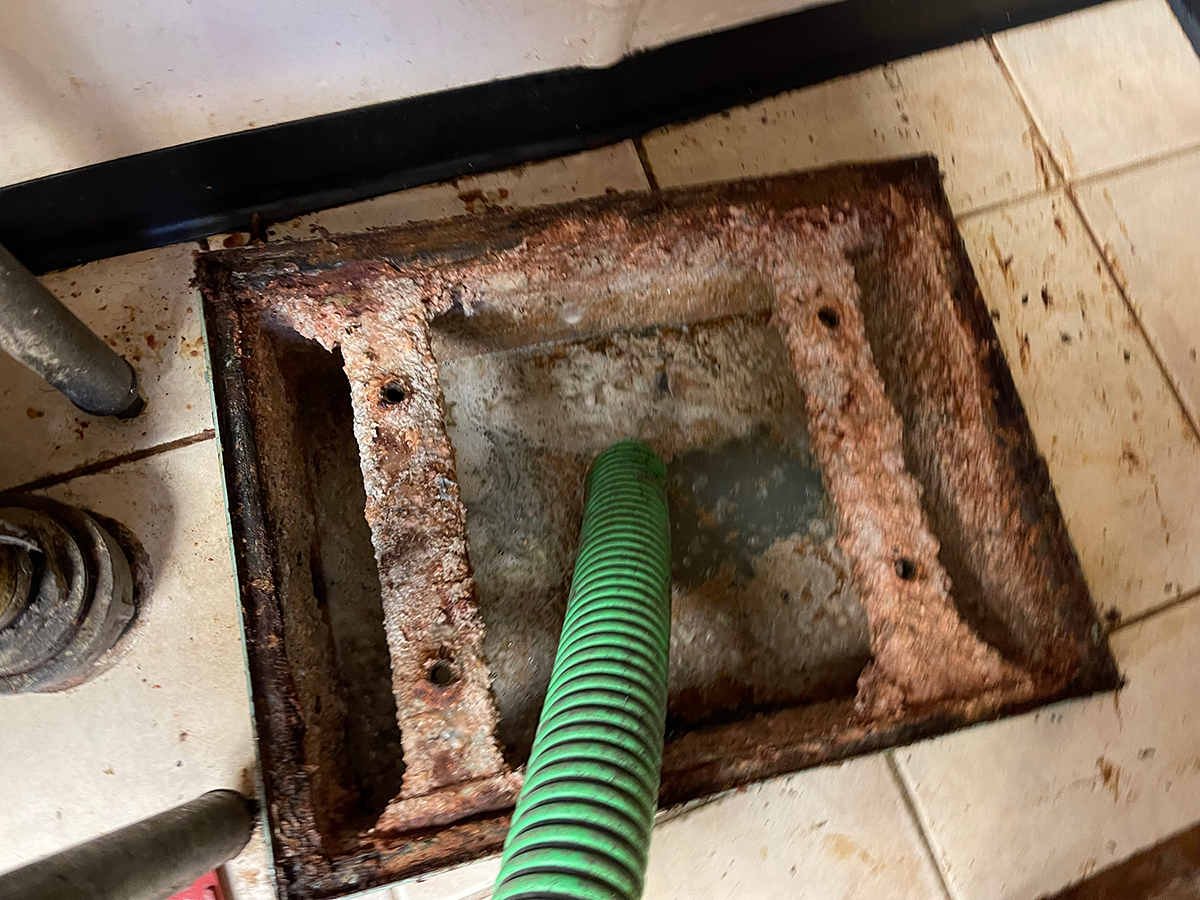Plumbers install, repair, and maintain pipes and fixtures that control water distribution and waste removal in homes, businesses, and industrial buildings. They also use their skills to inspect and diagnose plumbing problems.
Many vocational schools and community colleges offer certificate programs in plumbing. After completing a program, potential plumbers must obtain an apprenticeship to learn the trade through on-the-job training. Visit https://oharrasplumbing.com to learn more.
The handle of a faucet is a key component that not only adds to the overall design of the bathroom or kitchen, but also helps control water flow, temperature, and pressure. Faucet handles are available in a wide variety of shapes and styles, as well as finishes such as chrome, brushed nickel, and oil-rubbed bronze to match the rest of the room’s dcor. They are often made of high-quality materials that are durable, resistant to scratches and stains, and easy to clean. The type of handle you choose depends on function and aesthetics, but it’s important to compare several options and consider the material, size, and style to ensure that the fixture will fit your lifestyle.
Leaks can occur when the handle or other components of a faucet are worn out or damaged, and can lead to expensive repairs if left unattended. Fortunately, replacing or repairing a faucet handle is fairly simple. First, shut off the water supply valves under the sink to stop the flow of water into the sink and prevent potential flooding or water damage. Then, remove the handle by prying off the decorative cap or cover (if applicable) and removing the screw that holds the handle in place. Some handles have a button that can be popped off to expose the screw underneath, but you may need to use a screwdriver if the handle is stuck.
Once the handle is removed, carefully inspect it for signs of leaks or damage and replace the washer or O-ring if necessary. Then, screw the new handle onto the stem and tighten it. Finally, replace the decorative cap or cover and turn the water supply back on to test for proper operation.
To avoid future leaks, it’s best to lubricate the handle occasionally with penetrating oil. This can help prevent friction between the handle and the stem, which can wear down the seal. You can buy a bottle of penetrating oil at most hardware stores or online. It’s a good idea to apply the oil to any exposed surfaces under the sink, and in the crevices around the handle.
Faucet Cylinder
Faucet cartridges control the water flow by opening and closing passages through a series of rubber washers or ceramic discs. A small handle on the faucet spout moves the cartridge, allowing you to operate the faucet’s water controls and adjust its flow. If the cartridge becomes worn or has a leak, it needs to be replaced to prevent further damage and avoid water waste.
The cartridges in most bathroom faucets are quarter-turn ceramic disk types that can last years but eventually wear out, needing replacement. You can get them at hardware stores and home centers in kits with all the parts you need to repair the faucet. A kit usually includes a new cartridge, a new stem washer and a new seat washer. If you have the right tools and know how to work with them, replacing a faucet cartridge is fairly easy.
To begin, shut off the water supply valve on the pipe leading into your house. This is usually located near the water meter, and every homeowner should know where it is and how to operate it. Next, plug the sink drain with a paper towel or cloth. Locate and remove the faucet handle by turning it counterclockwise. You may need to use a screwdriver to loosen the thin retaining nut around the base of the faucet handle. Clamp a wrench or adjustable pliers around the nut to prevent it from scratching the finish on the faucet body.
With the retaining nut removed, you can now see and reach the leaking cartridge inside the faucet body. You should be able to feel the resistance when you move the cartridge back and forth. This resistance indicates that the seal between the cartridge and the valve seat is deteriorating. A new cartridge should eliminate this problem and keep your faucet working properly.
Cartridges are available in a wide variety of shapes and sizes, and they are designed to fit specific faucet models. Before you order one online, consult your owner’s manual or an online resource that lists compatible cartridges for your specific model of faucet. Once you have the new cartridge, install it in your faucet, making sure to orient it correctly.
Faucet Seat Washer
A faucet seat washer looks like a tiny donut, and it sits inside the compression faucet to make a seal. If the washer is worn out, you will get a drippy faucet. In many cases, you can replace the washer, and it is a less costly solution to replacing the entire faucet.
A leaky faucet not only wastes water, but it also deposits mineral buildup in the sink and corrodes your pipes. It is important to repair the faucet as soon as possible to prevent more damage. The most common cause of a leaky faucet is a damaged or broken washer. Replacing the washer will usually solve the problem, and it is a relatively simple job that can be done by most people.
There are two basic types of faucets; washer-type and cartridge-type. Washer-type faucets work by using a rubber or composition washer that closes onto a metal washer seat. The washer can become hardened or worn, and if the washer is not properly seated on the seat, water will seep through the gap. If you try to tighten the washer or seal, it can actually make the leak worse, as it can restrict water flow and lead to internal damage in the faucet.
If your faucet is dripping, you should turn off the water supply at the shut-off valve beneath the sink. Then, you can remove the handle, escutcheon cap and disk cylinder mounting screw. You should then be able to pull the stem out of the faucet and remove the neoprene seals in the cylinder with a blunt screwdriver. You can clean the neoprene seals with distilled white vinegar and a scouring pad, and then rinse them thoroughly.
The washer is on the bottom end of the stem secured by a brass screw or nut. It can be removed with a spanner or, if it is stuck, you can spray the washer with WD-40 and try to pry it loose. The old washer is then replaced with a new washer, and the valve stem is reinserted into the faucet body. Be sure to coat the new O-ring with nontoxic, heat-proof plumber’s grease.
Faucet O-Ring
A small disk-shaped piece called an O ring is located inside of your faucet spout to prevent leaks. Over time, O rings can work loose or wear out. Replacing the O ring can be an easy fix to stop your drip, drip, drip! Lowe’s carries a wide variety of kitchen faucet O rings to help you stop your leaky faucet for good.
To replace the O ring, first shut off the water supply valves under the sink. Next, remove the faucet handle and unscrew the spout collar nut by turning it counterclockwise. Then use a flathead screwdriver to remove the decorative cap on the faucet neck and expose the handle attachment screws. Remove the screw and pull off the handle. Then take a look at the black O ring on the bottom of the faucet neck. If it looks old and cracked this is a sign that the O ring needs to be replaced. After removing the old O ring, apply plumber’s grease to the new one and slide it into place on the faucet neck.
Once the new O ring is in place, screw the spout collar nut back on by turning it clockwise. Once the spout collar nut is tightened, you can reconnect the faucet handle and turn on the water. If you experience any leaking after replacing the O ring, there may be additional issues with your faucet. This is why it’s important to consult a professional plumbing service, who can address any problems that you might encounter during the repair process.
In most cases, repairing a leaking faucet is a simple project that you can do yourself. However, some faucets are more complex or have specialized components that require special knowledge and tools to repair. If you are unsure of your skills or lack the proper tools, it’s best to leave the job to a professional plumbing service. They are equipped to tackle a wide range of faucet types and models, and can ensure that your repair is done correctly. In addition, they can help you save money by preventing future issues with your faucet.







